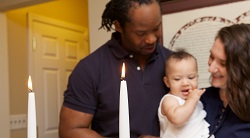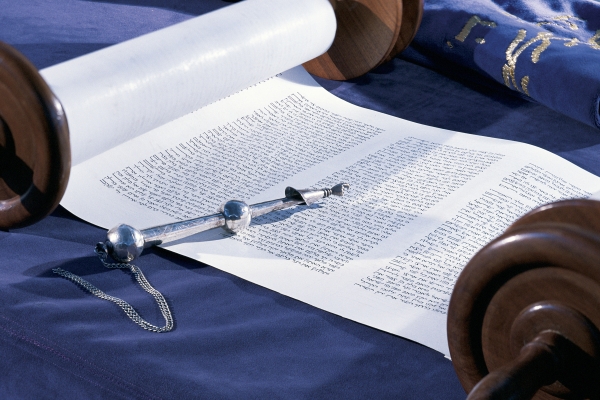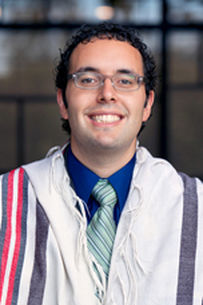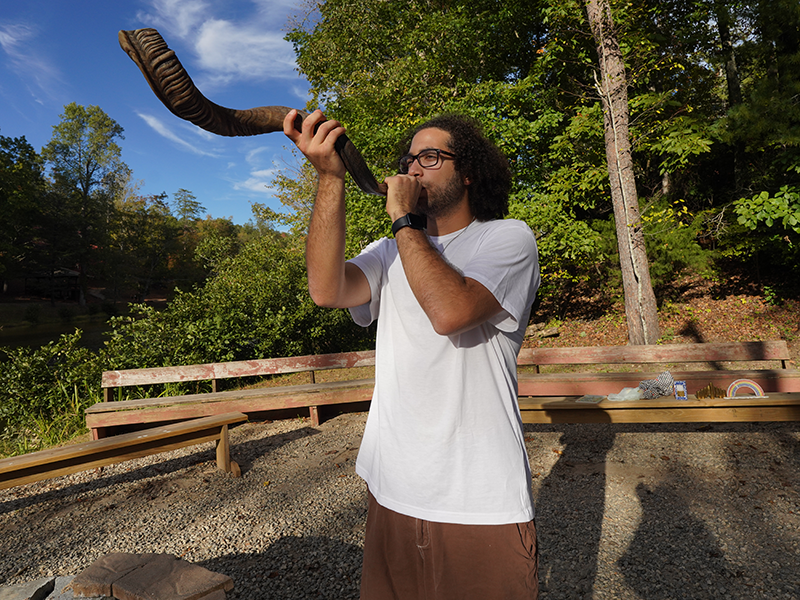 As a teenager, I had the unique experience of participating in a joint Reform/Orthodox retreat up at OSRUI, our URJ camp in Wisconsin. The negotiations around every ritual moment were rich, intense, complicated, and layered with our competing values of both honoring our differences and striving for a new kind of unity. Given that this was more than 25 years ago, I’m left with just a few flashes of memory, but one of them has stayed with me in vivid detail throughout all my journeys since.
As a teenager, I had the unique experience of participating in a joint Reform/Orthodox retreat up at OSRUI, our URJ camp in Wisconsin. The negotiations around every ritual moment were rich, intense, complicated, and layered with our competing values of both honoring our differences and striving for a new kind of unity. Given that this was more than 25 years ago, I’m left with just a few flashes of memory, but one of them has stayed with me in vivid detail throughout all my journeys since.
I remember walking over to the Orthodox service after the Reform service had ended and seeing one of the participants standing in front of the congregation, barefoot, with a tallit over his head and his hands spread wide. The members of the congregation were also standing and had covered themselves with their tallitot, and I heard singing. This bizarre sight completely mystified me and filled me with questions. I just had no idea what could be happening. Soon enough (I think over lunch), I learned that I had seen a ritual sometimes called Birkat Kohanim (the Priestly Benediction or Priestly Blessing), other times called N’si-at Kapayim (the “lifting of hands”), and sometimes called duchanen (Yiddish, from the Hebrew for “podium”).
The origins of this ritual, according to our tradition, come from this week’s Torah portion, Sh’mini. Following the final offerings of the extended ritual of the dedication of the Tabernacle, Aaron offers a blessing. The Torah does not give us the text of that blessing here, but it does describe the scene:
“Aaron lifted his hands toward the people and blessed them; and he stepped down after offering the purgation offering, the burnt offering, and the offering of well-being” (Lev. 9:22)
The people (whose presence had not yet been mentioned in this chapter) are gathered around the courtyard of the Tabernacle, and Aaron, standing up high on the elevated altar, lifts his hands to them. While the Torah does not expound on just how he lifts his hands – whether up above his head, out to the sides, or perhaps straight forward — I see him clearly in my imagination with his hands spread wide, with his palms facing the crowd, and with his fingers spread in that peculiar pattern Leonard Nimoy made famous as the “Vulcan salute.”
Rabbinic Midrash asserts that the blessing Aaron gave at this moment was none other than the threefold benediction (“The Eternal bless you and protect you. …”) of Numbers 6:24-26. Indeed, this moment is used as the proof text for the ritual I observed so many years ago at camp, where people of priestly lineage stand before the congregation with hands held high and recite the blessing (see Babylonian Talmud, Sotah 38a). This week, however, I invite you to imagine a different kind of blessing — one that exists beyond the words of the text and is expressed, somehow, in the very physicality of “lifting the hands.”
Many of us are used to keeping our bodies pretty much still during worship. We stand up and sit down. Maybe we bow here and there. We don’t use, in prayer, much of the body language and gesticulation that makes conversation exciting. There is a Torah to be found in this stillness — especially amidst the whirlwind of busyness that makes up our lives today. There is also a Torah to found in the simplicity of letting go of words and putting our bodies to use in giving and receiving blessing.
Psalm 63, according to tradition, was written when David was running from the murderous Saul. It is a poem of gratitude for and certainty in God’s help. In verse 5, David asserts, “I bless You with my life; I lift up my hands, invoking Your name.” It is difficult to imagine David, while literally fleeing for his life, finding himself spiritually or emotionally ready for prayer, but there he is, lifting his hands up. This gesture that began with Aaron blessing the people has now, in David’s hands, become a vehicle of blessing for God. Again, in my imagination of the scene, David stops running for a moment and uses the “spiritual technology” of lifting his hands to steady himself, connect with God, and prepare for whatever was coming next. The physical gesture didn’t just express the prayer, it created the moment where prayer was possible.
In my own prayer life, I have come back to this practice of lifting my hands many times. It can, honestly, feel corny, silly, or just uncomfortable. It can also completely change the experience of a prayer. In the Babylonian Talmud, Rabbi Ami said “a person’s prayer is heard only if they place their soul in their hands, as it is said ‘Let us lift up our heart with our hands’ (Lamentations 3:41)” (Taanit 8a). Our hands, lifted in prayer, are not empty: They contain our very souls, and when we lift them, we lift our own hearts with them.
Reform rabbis and cantors have long taken upon ourselves the priestly role initiated by Aaron as we have stood with hands lifted up and blessed members of our congregations. From experience, I can tell you that saying the blessing with the physical gesture just feels different. This difference is available to all. Try lifting your hands when you sing Mi Shebeirach, when you rise up on your toes singing “Kadosh, kadosh, kadosh” or as you prepare to recite the Bar’chu. Like King David, when your spirit feels harried and anxious, don’t rely on words alone to create the moment of prayer. Place your soul in your hands, and lift them up.
A few years after that Reform/Orthodox retreat, I returned to OSRUI for Hava Nashira, the annual legendary songleader conference hosted at the camp. Just about 100 feet from the chapel where I first saw this ritual, I heard Debbie Friedman teach a melody celebrating Aaron. She sang: “Lift your hands toward Israel and bless the people, bless the people with everlasting love.” Everyone in the room stood, lifted our hands, blessed God, and blessed each other. And amazingly, in that moment, every single person felt truly blessed.
Cantor David Berger serves as the cantor of KAM Isaiah Israel Congregation in Chicago, IL. Currently pursuing his Ph.D. at the Chicago Theological Seminary, he is honored to be the inaugural Scholar in Residence for the American Conference of Cantors.

The rituals that we perform are layered with levels upon levels of meaning. The lighting of Shabbat candles might invoke, for some, a sense of gratitude for the natural world. For others, it might bring about relief that the week is coming to an end or summon the pleasant memory of a grandparent’s Shabbat recipe. By the same token, the Priestly Benediction (Priestly Blessing) — hinted at in this week’s Torah portion, Sh’mini, and described by Cantor Berger in his essay — might contain any number of associations. Its words are used by rabbis to bless their students and by parents to bless their children. Its primary action — the lifting of hands — reminds us of the ordination of rabbis, washing of hands before a meal, and the practice of grasping hands while reciting the blessing over bread.
Our rituals matter. Whether we are lighting candles, blessing our children, baking challah, or joining in prayer, these actions have the capacity to connect us with God and with each other. That is one of the primary lessons of the opening words of Sh’mini.
Unfortunately, this is not the only ritual experience that our parashah describes. A chapter later, after Aaron has lifted his hands to bless the people, his sons Nadab and Abihu attempt to perform an offering, and are met with tragic results:
Now Aaron’s sons Nadab and Abihu each took his fire pan, put fire in it, and laid incense on it; and they offered before the Eternal alien fire, which had not been enjoined upon them. And fire came forth from the Eternal and consumed them; thus they died at the instance of the Eternal. (Lev. 10:1-2)
The commentators disagree over what exactly Nadab and Abihu did wrong. Were they drunk? Were they impatient and therefore not following protocol? Several of the interpretations focus on the words ish machtato, “each took his own firepan,” to argue that their sin was (to use an English idiom) taking matters into their own hands. Nadab and Abihu fail to consult with Moses, with their supervisor (their father, the High Priest), or with their community as a whole. And for the sin of separating themselves from the community, they were punished.
As Reform Jews, we struggle with this story. Nadab and Abihu’s penalty is unconscionably severe, for the sin of performing an innovative ritual. But the message beneath the story — that Judaism is necessarily a communal matter — is one that does speak to our lives. As Jews, when we recite blessings, we almost always recite them in the plural: we call upon our God to grant us peace; we even confess each other’s sins on Yom Kippur! This communal nature of Judaism is very old: the Rabbis of the Talmud declare that “when ten people pray [together], the Divine Presence is with them” (B’rachot 6a).
This is a difficult proposition during this time of social distancing, when we have necessarily been separated from one another. Our isolation has challenged our Judaism, and it has challenged our humanity: we are social beings and we need one another. How fortunate that we live in a time when a Zoom seder and online Shabbat services are possible — so that we can at least be together virtually.
This is not to say that one can only be Jewish in consultation with the community. That very same passage in the Talmud goes on to argue that even “when one person sits and studies Torah,” the Divine Presence is there (B’rachot 6a). But the implication is that to do Jewish together is somehow a higher formulation: we learn from each other, connect with one another, and deepen our own Jewish experience through the interaction. This is the case even when our interpretations or associations differ.
This, in the end, is the beauty of Jewish ritual. We can perform rituals together, but not necessarily agree on their meanings. We can light candles together, with all of our differing associations. We can pray together, even if we believe differently about God. We can share rituals like the Priestly Blessing with denominations of Jews whose approach is very different from our own, and still bring goodness and meaning into our lives.
We need each other — perhaps more right now than ever before. May we recognize that Jewish practice is meant to bring us together. May we clasp hands (virtually) and connect with each other, inviting God’s Presence into our midst while respecting our wide variety of belief, opinion, and experience.
Rabbi Micah Streiffer is rabbi of Kol Ami in Thornhill, Ontario and creator of Seven Minute Torah, a popular weekly podcast about the Torah portion.
Sh’mini, Leviticus 9:1−11:47
The Torah: A Modern Commentary, pp. 798−823, 1,144-1,147; Revised Edition, pp. 705–727, 1,022-1,026
The Torah: A Women’s Commentary, pp. 615–636, 915-936
Haftarah, II Sam. 6:1-7:17
The Torah: A Modern Commentary, pp. 986−990, Revised Edition, pp. 729−733
Explore Jewish Life and Get Inspired
Subscribe for Emails


